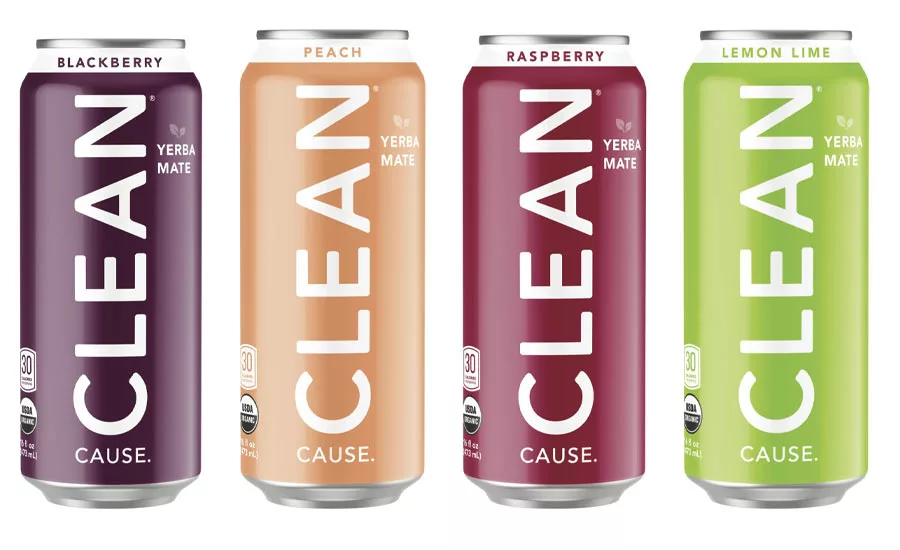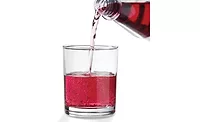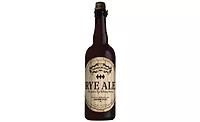R&D Feature
Clean label finds its roots in nature
Reduced sugar sports drink present clean-label opportunity

In 1992, MTV introduced audiences to “what happens when people stop being nice and start getting real” when it debuted “The Real World.” In the food and beverage markets, clean-label trends are showing what happens when ingredients “get real.”
“Clean label has evolved in the past few years — consumers are more aware of and even expect clean label claims such as ‘made with real ingredients’ and ‘no additives or preservatives,’” says Amanda Wolff, marketing manager for Beloit, Wis.-based Kerry.
Citing data from HealthFocus International, Pam Stauffer, global marketing programs manager for Minneapolis-based Cargill, notes that clean eating is a high priority for a majority of consumers.
“For many, the idea of clean eating manifests as a shift away from processed food and beverages, with 54 percent of global consumers ‘extremely’ or ‘very concerned’ about processed food, according to HealthFocus,” she says. “Ingredients are one way consumers determine if a product is highly processed. In the HealthFocus survey, 61 percent rated recognizable ingredients and 48 percent said having fewer ingredients on the label were ‘extremely’ or ‘very important’ in brand selection.”
Given this broad consumer appeal, clean label seems to be more than a vanguard trend.
“Clean label is no longer a trend, but an expectation,” says Michael Bush, chief executive officer of Prenexus Health, Gilbert, Ariz. “What health-conscious consumers want is transparency from brands. They want to know what they are putting into their bodies, how it functions and want to be confident that the product was produced using sustainable and environmentally safe ingredients and processes.”
Because there is no regulated definition for clean label, ingredient suppliers are proactive to ensure they support what the consumer market identifies as clean label.
“There’s an ongoing discussion around the meaning of the term ‘clean label’ but, for us, the principles relate to giving consumers what they want,” says Jeannette O’Brien, vice president of GNT USA, Tarrytown, N.Y. “Consumers want to feel a sense of reassurance when they look at a product label; they want to see ingredients they can recognize and trust. Fruits and vegetables meet these criteria perfectly.”
However, when it comes to beverages and clean label, experts note that it’s not a one-size-fits-all solution.
“What consumers perceive as a ‘clean label’ beverage though, varies greatly,” says Philip Caputo, marketing and consumer insights manager for Brooklyn, N.Y.-based Virginia Dare. “From juices to teas to sports drinks and beyond, there are many different factors — such as ingredient legends, label claims, and more – that play into whether consumers consider a drink to be clean label.”
The beverage factor
Because of the diverse needs across the beverage market, some categories have been more active in embracing clean-label solutions.
“One category where we’re seeing quite a bit of activity in the clean ingredient space is the energy category,” Caputo says. “Formulations with vitamins, minerals, antioxidants, herbs and superfoods are growing in popularity alongside the increased pressure for clean labels and the removal of undesirable ingredients. Additionally, we’re seeing growth in wellness beverages (e.g., kombucha, drinking vinegars, tonics, elixirs and cleanses), tea beverages (RTD, loose leaf and teabags), and cold-pressed fruit and botanical beverages.”
Cargill’s Stauffer notes that beverage categories that already are associated with a healthy lifestyle have shown a propensity to embrace clean-label solutions.
“Given many consumers’ association of ‘clean label’ with ‘better-for-you,’ we’ve seen the greatest interest in beverages that already carry a health halo,” she says. “Dairy products like flavored milks and drinkable yogurts, dairy-alternative drinks and sports nutrition beverages are some of the categories where we’ve seen the most interest in label-friendly formulation.”
Although performance beverages like sports drinks should be a natural fit for clean-label ingredients, some experts note that the transition has not been an easy switch.
“More and more consumers pursuing an active lifestyle want products that help them to manage a busy day, look and feel good, and/or maintain a healthier weight,” says Kyle Krause, product manager of functional fiber and carbohydrates for North America for BENEO Inc., Parsippany, N.J.
He adds that optimum fuel supply is key in sports nutrition. “A wise carb choice can make all the difference,” Krause says. “With casual fitness users looking to tone their bodies and reduce fat, there is growing demand for products that deliver more sustained energy.”
Derived from sugar beet, Palatinose is BENEO’s isomaltulose ingredient that provides full carbohydrate energy but with a low-glycemic profile. “It can be included in beverages marketed as natural,” Krause says. “And, because of its very stable molecular bond, the functional carbohydrate is digested more slowly and delivered in a sustained way to the body with low effects on blood glucose and insulin levels.”
Indeed, sugar reduction trends now are a bigger part of the conversation.
“Sugar-free or reduced sugar beverages are top of mind for clean-label consumers as more consumers look for better-for-you beverages,” Kerry’s Wolff says.
Cargill’s Stauffer also highlights the role that sugar reduction has taken in the clean-label movement.
“One of the biggest opportunities lies in formulating label-friendly, reduced-sugar beverages,” she says. “Our proprietary research suggests consumers aren’t just scrutinizing product labels, looking to avoid sugar. Artificial sweeteners are also on their radar.
“In contrast, consumers consistently view stevia leaf extract positively on product labels,” Stauffer continues. “Aided by the significant improvements in next-generation stevia products like Cargill’s ViaTech stevia leaf extract and EverSweet stevia sweetener, formulators can now create a wide-array of reduced-sugar products, without sacrificing great taste.”
Clean and functional
Clean label is not the only movement spreading across the beverage market. Functional beverages continue to proliferate the U.S. market; however, products that can successfully amalgam clean label and functionality are proving to be a winning recipe.
“The combination of functional and clean-label attributes creates an appealing product choice for consumers,” Prenexus Health’s Bush says. “For example, a clean label product partnered with a non-GMO, organic functional ingredient such as a natural prebiotic satisfies the consumer’s desires with the added functional advantages provided by the functional ingredient.”
Bush adds that the company is promoting health and wellness through the research, development and production of branded prebiotic ingredients. “Our ingredient, XOS95 Prebiotic not only meets the non-GMO and clean-label demands, but also is the only U.S. farmed and manufactured organic prebiotic in the market,” he says.
Brock Lundberg, president of research and development and applications for River Falls, Wis.-based Fiberstar Inc., also highlights the abilities that beverage-makers can intersect functionality with clean label.
“It is possible to have both functional attributes and clean label ingredients,” he says. “For example, Citri-Fi, which is a citrus fiber created from byproduct or upcycled material from the juicing industry, provides many functional properties, including thickening, suspending, creaminess, and emulsification.
“Using patented technology, Fiberstar increases the surface area to enhance functional properties naturally from natural citrus fiber raw materials without doing chemical modifications to provide attributes in beverages that typically would only be expected from chemically modified ingredients,” Lundberg continues. “This natural ingredient contains both soluble and insoluble fiber and can come in different particle sizes. As a result, various textures, ranging from smooth and creamy to pulpy, can be created.”
GNT USA’s O’Brien also highlights how functional and clean label can go hand-in-hand. Because of the sensitivity to some of these ingredients, though, beverage-makers should do research about how these interactions could impact the color of a beverage.
“EXBERRY can provide a clean-label coloring solution for almost any beverage application, but understanding ingredient interactions is vital, since certain vitamins, minerals and botanicals can alter performance,” she says. “With enhanced waters, for example, vitamins can introduce a degree of color in their own right, so this needs to be taken into account as part of the formulation process.
“We work hard to find the balance between performance and clean-label attributes by focusing on three fundamental areas: raw materials, processing and application know-how,” O’Brien continues. “We grow fruits and vegetables with a focus on color, we process those special fruits and vegetables with color preservation in mind, and we work hard to understand which EXBERRY products are best suited to each individual beverage application.”
Ingredient suppliers also investing avenues to support the clean label in the flavor space. For instance, Kerry recently acquired Biosecur Lab and its range of natural plant extracts.
“By integrating the Biosecur clean-label extracts with our complete Kerry taste and nutrition portfolio, we have created complete flavor systems [that] bring out the best taste and quality in your beverage over its shelf life,” Wolff says. “Labeled as natural flavor, these clean-label flavor systems deliver more than just great taste. We see a lot of potential for cleaner labels using our natural plant extract based solutions in refreshing beverages across all channels. This could allow our customers to call out “no artificial preservatives” on their label or menu without impacting product quality.”
Looking for a reprint of this article?
From high-res PDFs to custom plaques, order your copy today!






